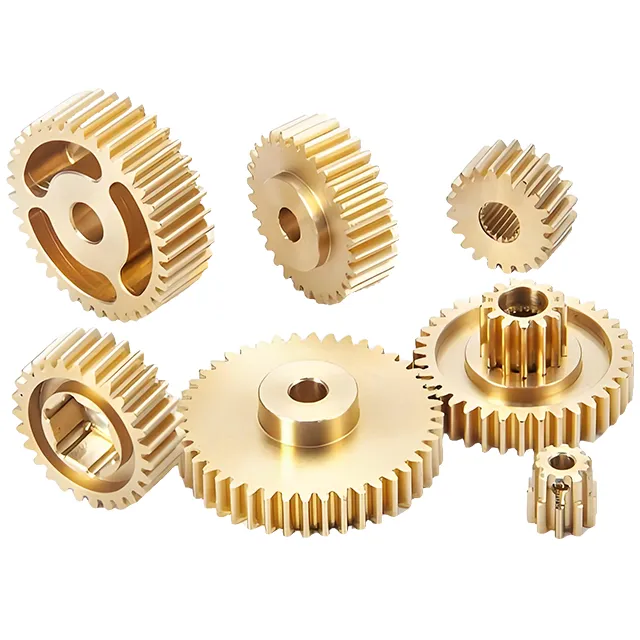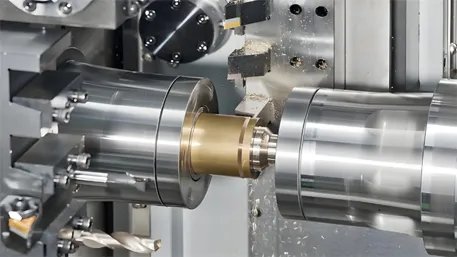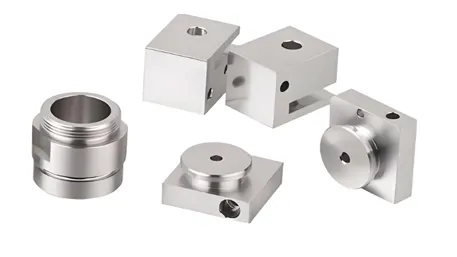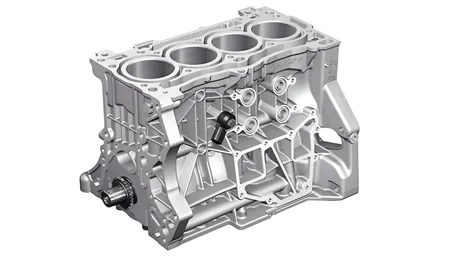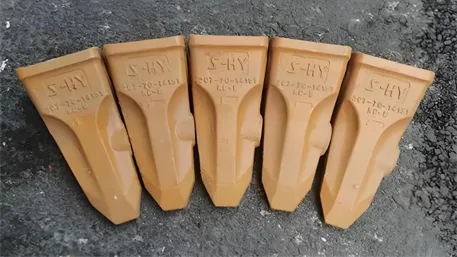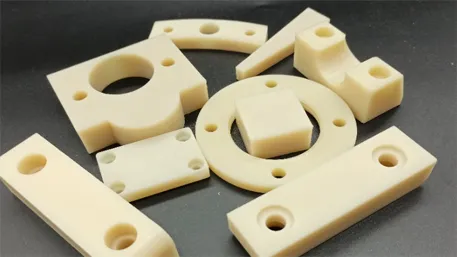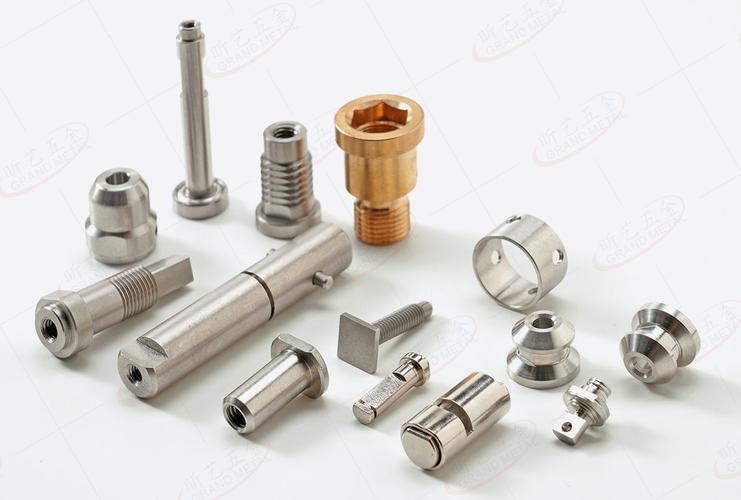
- Corrosion Resistance: Protection Against Harsh Environments
- 316L (UNS S31603) adds molybdenum (2-3%) to resist pitting in saltwater, acidic, or chloride-rich environments (e.g., marine, medical dialysis systems), with a corrosion rate ≤0.01mm/year in 5% NaCl solution.
- 304 (UNS S30400) works for food/ beverage contact (meets FDA 21 CFR 177.2600) and mild industrial settings, resisting oxidation up to 870℃.
- 430 (UNS S43000) (ferritic stainless steel) offers cost-effectiveness for non-corrosive dry environments (e.g., decorative industrial fittings) but lacks molybdenum for harsh conditions.
- Mechanical Strength: Durability Under Load
- 316L has a tensile strength of 485-655MPa and yield strength ≥170MPa, ideal for high-pressure hydraulic fittings (rated up to 3000 psi).
- Through CNC machining, even thin-walled fittings (wall thickness ≥0.5mm) maintain structural integrity, avoiding deformation during assembly or use.
- Hygiene & Compliance: Safe for Sensitive Industries
- 316L meets ISO 10993-1 biocompatibility standards (no cytotoxicity, sensitization, or genotoxicity) and can be sterilized via autoclaving (121℃/15 psi) or gamma radiation.
- Food-contact stainless steel (304/316L) has a smooth, non-porous surface (Ra ≤0.8μm post-polishing) that prevents bacteria buildup, complying with EU Regulation (EC) No. 1935/2004.
II. Custom CNC Machining Process: A 7-Step Workflow for Precision Fittings
(I) Demand Definition: Align with Industry Requirements
- Pressure rating: Hydraulic fittings need ≥3000 psi (burst pressure ≥9000 psi); medical fluid lines require 100-500 psi.
- Dimensional tolerance: Threaded fittings (e.g., NPT, BSP) need thread pitch accuracy ±0.01mm; concentricity for fluid flow ≤0.005mm.
- Surface finish: Medical fittings need electropolishing (Ra ≤0.2μm) to avoid fluid residue; industrial fittings may use bead blasting (Ra 1.6-3.2μm) for grip.
(II) Material Selection: Grade Matching to Use Case
|
Stainless Steel Grade
|
Key Alloying Elements
|
Best For
|
Compliance Standards
|
|
316L
|
Cr (16-18%), Mo (2-3%)
|
Medical, marine, chemical fittings
|
ISO 10993, ASTM A270, FDA 21 CFR 177.2600
|
|
304
|
Cr (18-20%), Ni (8-10%)
|
Food, beverage, low-pressure lines
|
ASTM A480, EU 1935/2004
|
|
430
|
Cr (16-18%), no Ni
|
Dry industrial, decorative fittings
|
ASTM A240
|
(III) CNC Machining: Overcoming Stainless Steel’s Challenges
- Tool Selection & Setup
- Use carbide tools with TiAlN or TiCN coatings (e.g., Sandvik Coromant GC4315) to resist wear—coated tools last 2-3x longer than uncoated ones.
- Cutting parameters: For 316L turning, spindle speed 800-1200 rpm, feed rate 0.1-0.2 mm/rev, depth of cut 0.5-1.0 mm (avoids excessive heat buildup).
- Precision Machining Operations
- Turning: For cylindrical fittings (e.g., pipe adapters), use live tooling CNC lathes (e.g., Haas ST-20) to machine threads, grooves, and chamfers in one setup (reduces positional error to ≤0.003mm).
- Milling: For complex fittings (e.g., 3-way tees), 5-axis CNC mills (e.g., DMG MORI CMX 50 U) handle multi-sided machining without repositioning, ensuring hole alignment tolerance ±0.002mm.
- Drilling: Use peck drilling for deep holes (depth-to-diameter ratio >5:1) to clear chips and prevent tool breakage—apply high-pressure coolant (1000 psi) to reduce heat.
- Coolant & Chip Management
- Use water-soluble emulsions (5-10% concentration) to cool tools and flush chips—stagnant chips cause scratching and work hardening.
- For medical fittings, use food-grade coolant (e.g., Master Fluid Solutions TRIM MicroSol 585XT) to avoid contamination.
(IV) Post-Processing: Enhancing Performance & Compliance
- Surface Finishing: Medical fittings undergo electropolishing (removes 5-10μm of material) to achieve Ra ≤0.2μm; industrial fittings may use passivation (nitric acid treatment) to restore the chromium oxide layer.
- Cleaning & Sterilization: Medical fittings are ultrasonic cleaned (40 kHz, 15-20 minutes) to remove coolant residue, then sterilized via ethylene oxide (EO) with residual levels ≤5μg/g.
- Leak Testing: All fluid-carrying fittings undergo pressure testing (e.g., 1.5x rated pressure for 30 minutes) with helium leak detection (sensitivity ≤1×10⁻⁹ atm·cc/s).
(V) Quality Inspection: Ensuring Consistency
- Dimensional Checks: Use coordinate measuring machines (CMMs, e.g., Zeiss Contura G2) to verify critical dimensions—sample size ≥5% of each batch, with 0% tolerance deviation.
- Material Verification: X-ray fluorescence (XRF) testing confirms alloy composition (e.g., 316L’s molybdenum content); salt spray testing (ASTM B117) validates corrosion resistance (316L survives 1000+ hours with no red rust).
III. Typical Application Scenarios: Fittings Tailored to Industry Needs
- Medical Device Fittings
- Application: Dialysis machine fluid connectors, surgical instrument fluid lines.
- Requirements: 316L material, electropolished Ra ≤0.2μm, ISO 13485 manufacturing, leak rate ≤1×10⁻⁶ cc/s.
- CNC Solution: 5-axis machining for complex port geometries, followed by EO sterilization and batch-specific traceability labels.
- Food & Beverage Fittings
- Application: Dairy processing pipe elbows, craft beer brewery valves.
- Requirements: 304 material, bead-blasted surface (Ra 1.6μm), no dead zones (internal radii ≥1.5mm to avoid product buildup).
- CNC Solution: Single-setup turning/milling to eliminate seams, followed by passivation and FDA-compliant cleaning.
- Industrial Hydraulic Fittings
- Application: Heavy machinery hydraulic adapters, offshore oil rig fluid lines.
- Requirements: 316L material, threaded NPT/BSP ports (class 2A/2B fit), burst pressure ≥9000 psi.
- CNC Solution: High-torque threading operations, stress relief annealing (700℃ for 1 hour), and pressure cycling tests (1000 cycles at 3000 psi).
IV. Selection Guide: Choosing a CNC Machining Partner for Custom Fittings
- Key Qualifications to Verify
- Certifications: ISO 9001 (quality management), ISO 13485 (medical), AS9100 (aerospace, if applicable).
- Equipment Capability: In-house 5-axis CNC mills/lathes, CMMs, and leak testing equipment (avoid partners relying on subcontracted inspection).
- Traceability: Ability to provide batch-level MTRs, inspection reports, and sterilization records (critical for medical/food industries).
- Cost & Lead Time Optimization
- Design for Manufacturability (DFM): Work with the partner to simplify geometries (e.g., replace sharp corners with radii) to reduce machining time by 20-30%.
- Batch Sizing: For low-volume orders (10-50 pieces), ask about “job sharing” (combining with similar orders to lower setup costs); high-volume (1000+ pieces) may qualify for dedicated tooling.
- Red Flags to Avoid
- No MTRs or certification documentation.
- Generic machining parameters (one setup for all stainless steel grades).
- Unclear quality acceptance criteria (e.g., “meets industry standards” without specific tolerances).
Disclaimer
- All information, opinions, and data contained in this article are for the purpose of information transmission only and do not constitute any advice on investment, transactions, law, medical care, or other matters.
- The content of the article is compiled based on public information or created based on the author’s personal understanding. Although every effort is made to ensure accuracy, it does not guarantee the completeness, accuracy, and timeliness of the information, nor does it bear any responsibility for any losses caused by the use of the content of this article.
- If the article involves third-party opinions, pictures, data, and other content, the copyright belongs to the original author. In case of infringement, please contact us for deletion.
- Readers should make independent decisions based on their actual situation and combined with professional opinions. The user shall bear all consequences arising from the use of the content of this article.

Name: Dr. Benjamin Keller
Nationality: Germany
Titles: Senior Research Scientist, Industrial Technology Consultant
Work Experience and Industry Qualifications:
An expert in the CNC field from Germany, with 25 years of in – depth industry experience. He has long focused on the high – precision optimization of five – axis linkage machining technology, the intelligent upgrade of AI – driven numerical control systems, and the practical application of digital twins in machining scenarios. He is particularly good at solving machining technical problems of complex surfaces in aerospace and precision components in the medical field. He is proficient in advanced programming of G – code and M – code, and is skilled in the debugging and optimization of mainstream numerical control systems such as Fanuc and Siemens. He can build an adaptive model of cutting parameters through machine learning algorithms, use virtual simulation tools to pre – rehearse the machining process and perform error compensation. At the same time, he has the ability to integrate multi – axis machining processes and additive manufacturing technologies, which can effectively improve machining efficiency and precision consistency.

